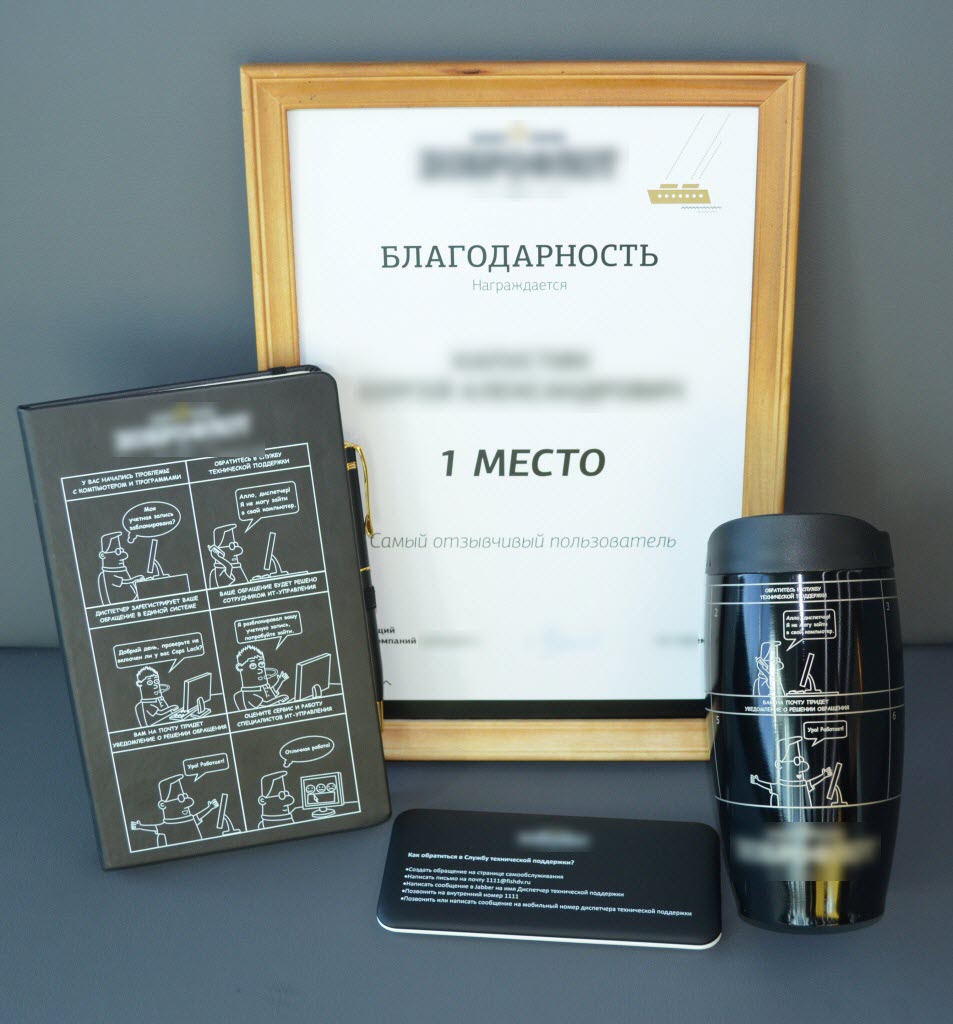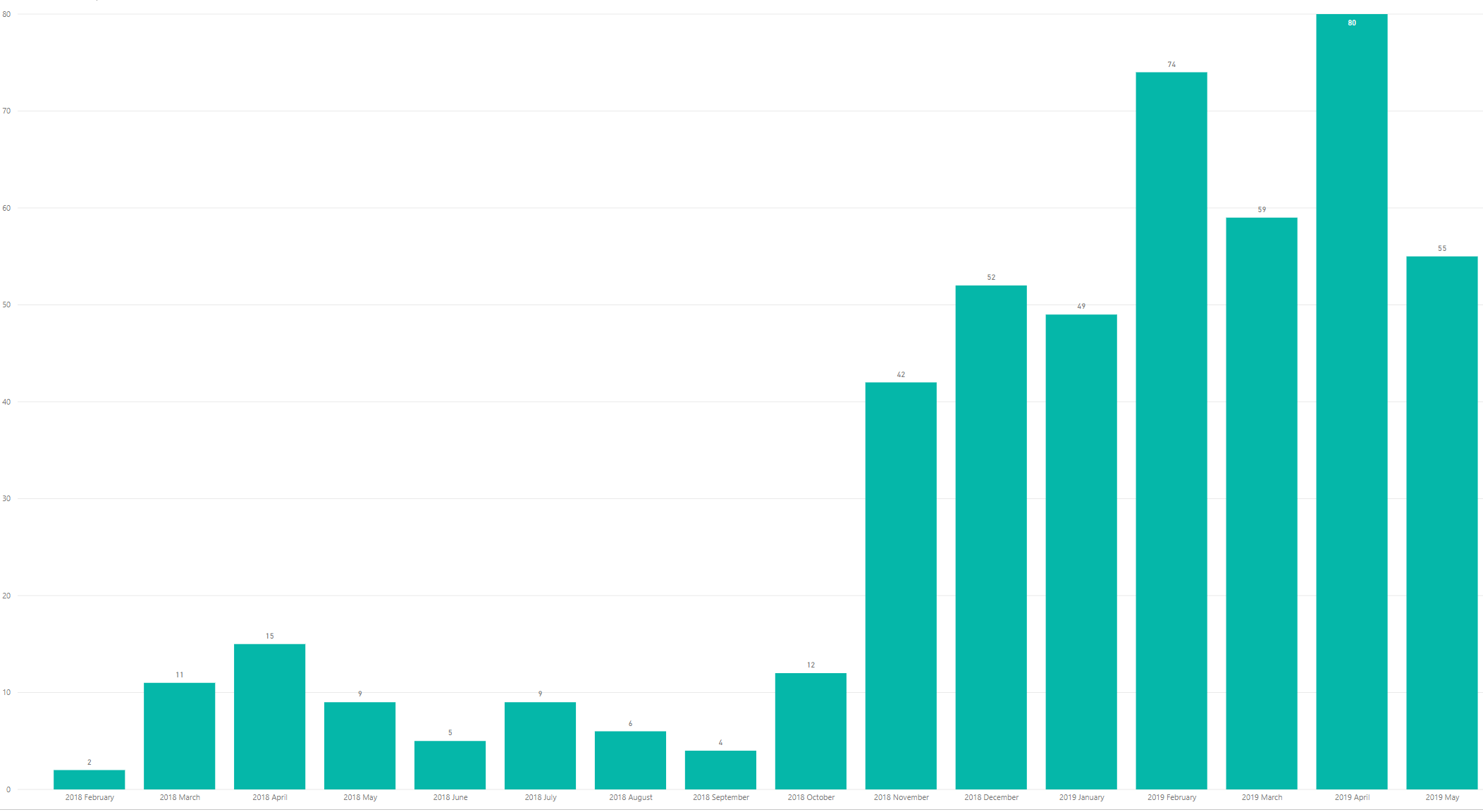How to attract users to the self-service portal

Why do I need a self-service portal? How to get users to submit requests through the self-service portal? In this article, the head of the internal technical support service shares his experience and conclusions on the launch of the self-service portal.
What is a self-service portal? If you give a brief definition, this is the interface for customers, with the help of which they submit requests for services to a service unit or organization. If we consider the self-service portal in the IT world, then this is another way to submit user requests to the Service Desk. ITSM methodologies say that the service unit should have several channels for receiving calls. Each organization has its own set of channels. For example, before using the self-service portal, we used the following channels:
- post office;
- instant messenger;
- telephone.
This set of channels fully covers the needs of users of the business that we support. But since February 2018, we decided to expand our omnichannel and launch an additional channel for receiving calls - the self-service portal. Moreover, he went on top of the Service Desk call processing system, which we implemented in the organization back in 2017. The launch was also warmed up by the theses that sellers of box
- Self-service portal reduces IT costs. After the implementation of the portal, you do not need to hire additional staff who will be engaged in the registration and classification of complaints. Since users will independently register and classify appeals through the portal.
In practice: Not all users are competent to classify calls, so they will make mistakes that will be raked by Service desk employees. Such a cost reduction. - The self-service portal reduces the number of calls to the Service Desk. The portal will have a knowledge base and users will independently decide their appeals on cases from the documentation.
In practice: Users do not read the documentation if there is anyone to call / write. That users began to read the documentation it is necessary to advertise and promote this documentation. The self-service portal itself does not solve this problem.
There are other marketing points, but this minimum set will be enough to understand the problem. Imagine that you bought into high-profile marketing tricks and decided to introduce a self-service portal in your organization. And since most often at the start you are only sold a portal and technical documentation without methodologies for attracting users to the portal, you will immediately encounter a problem - users will not use your self-service portal. This is logical. If your users have always contacted you by phone and mail, then why should they start using the self-service portal? How to attract them to the portal? I heard the following options:
- Disable incoming calls in the Service Desk and announce that you accept all calls only through the portal. Sounds like a very radical idea. I have not seen such cases in practice. Maybe in some totalitarian organization this will work.
- Process applications received through the self-service portal several times faster than through other channels. It sounds great, but how can this be achieved if you already have insufficient resources? Expand or optimize existing resources?
The above options did not suit us. In March 2018, it was announced to all users that we had a new channel for submitting calls, but as expected, a miracle did not happen, users practically did not use this channel. It was necessary to somehow solve this problem and I decided to "bribe" users. For this, a game model was prepared. Based on this model, a competition among users was announced. Competition Objectives:
- increase the loyalty of users of IT services;
- increase the proportion of ratings for appeals;
- popularize user documentation;
- redirect part of user requests to the self-service portal.
The conditions for participation in the competition were determined and various nominations were highlighted, including the nomination - The Most Independent User . Such an achievement could be received by employees who most of all made calls through the self-service portal. To increase the number of winners, three winning places in each nomination were allocated.
In November 2018, a competition was announced on the corporate portal. We decided to reward the most active and loyal users for the previous period, who have used the portal since February 2018 and at the same time motivate users for the next period. While the loyal users rubbed their hands and waited for the award, and the disloyal bit their elbows, I drew comics about our Service Desk, counted the metrics, agreed on a certain amount for making gifts for the winners, ordered letters and arranged for the staff to publish an article in the corporate newspaper on the award. Everything was ready for the award.
At the end of December 2018, a solemn rewarding of the winners was held in the central hall of the organization, and a corresponding announcement with photos and interviews was published on the corporate portal. At the same time, all winners, in addition to material gifts, were assigned additional statuses in their personal cards on the corporate portal as a bonus:
- nomination name and gold star for first place;
- nomination name and silver star for second place;
- nomination name and bronze star for third place.

At the time of planning the contest, I was not sure where this would lead, because I had no such experience before and I have never seen such cases in ITSM practice. There was only confidence that the number of calls should increase. On the chart below (clickable picture) the effect of the competition is visible:
- in February 2018, we launched a self-service portal;
- in March 2018, we announced that there was a new way to submit complaints;
- in November 2018 we announced the start of a contest for users;
- In December 2018, we held an award ceremony.

Did the contest work for sending requests through the self-service portal? Yes, it worked. With relatively small financial costs, the number of requests submitted through the self-service portal has increased significantly. Therefore, if you need to increase the flow of calls on the self-service portal and really reduce IT costs, this case works. At our place, we plan to hold such events once every half a year, since while the self-service portal is not our main channel and is not functionally developed to the proper level. But the plans have its further development.
But with this approach, the question immediately arises - "Will there be cheaters who intentionally begin to create meaningless calls through the self-service portal to get the coveted mug and star?" Answer: “Appear.” In order to besiege
